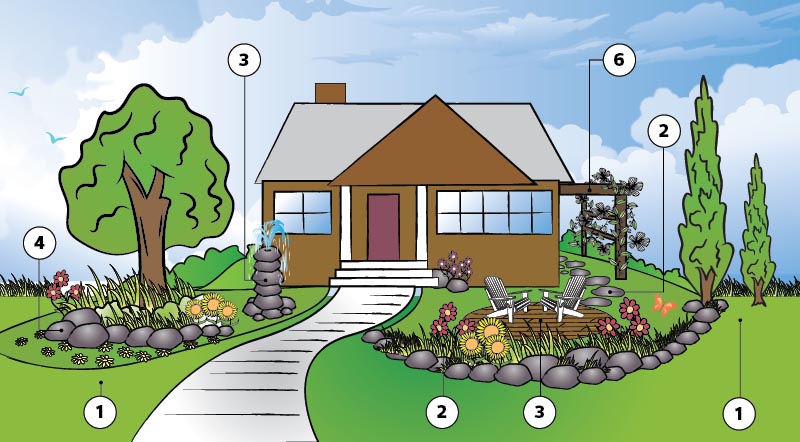What existing features are there that you wish to keep: mature trees? Deck or patio? Walkways?
When building a new home or undertaking any construction projects, it is important to protect mature vegetation, especially trees, from damage.
How do you currently use your space and are there different ways you would like to use it? Consider:
- How you walk through your yard? Do you need paths for high traffic areas?
- How much lawn space do you need? Do you have kids or pets who need this space to play?
- Do you eat meals outside in the warm weather? Would you like to be able to?
- How many people does the space need to accommodate on a regular basis?
- Do you require a deck?
- Do you need a shed for storage?
- Is privacy a concern?
- Will you be vegetable gardening?
- Are there views to highlight?
Water is the element that can cause the most issues if not properly accounted for. Grading your site appropriately will save many headaches. The ground needs to slope away from your house to prevent water entering your basement during rainfall or snowmelt.
If you have an older home, note the drainage pattern of your yard.
- Where does the water flow when it rains heavily or when the snow melts?
- Are there areas where water collects?
- Does grading around the house need to be corrected?
Tip: For new builds consider using mulch along the sides of houses in case grading needs to later be adjusted after settling.
Mark down areas that get sun throughout the day, for part of the day and the shady places.
Note: Newer subdivisions may not yet have their neighbours’ houses/garages built. This will influence where future shade areas are in your yard.
The sun’s movement should be considered when planting trees. Avoid planting large evergreen trees to the south of your home otherwise you cannot take advantage of warming winter sunlight.
Using a tool like Suncalc.org is helpful to see how the sun travels through the sky and the angle of shadow at different times of the year.
It is helpful to consider the sun and shade areas in the peak of the summer as well as at the beginning/end of the growing season to determine what light conditions your plantings will be in.
- Are there any covenants for the area you live in?
- Do any easements or rights-of-way run through your yard?
- Identify where your property lines are.
- If you are building a deck (or platform structure), there are limits on how far into the property setbacks that it can extend.
- Call Before You Dig so that you know where any underground utilities are located and what precautions are needed. Also, note if there are any overhead power lines as this will later affect locations for trees or shrubs that are too tall to be planted beneath them.
Mark all of these constraints on your plan so you can see what spaces are available for and are best suited to your wish list. An important reality to recognize is your budget as it may impose limits to the scope of your project or influence your material selection.


